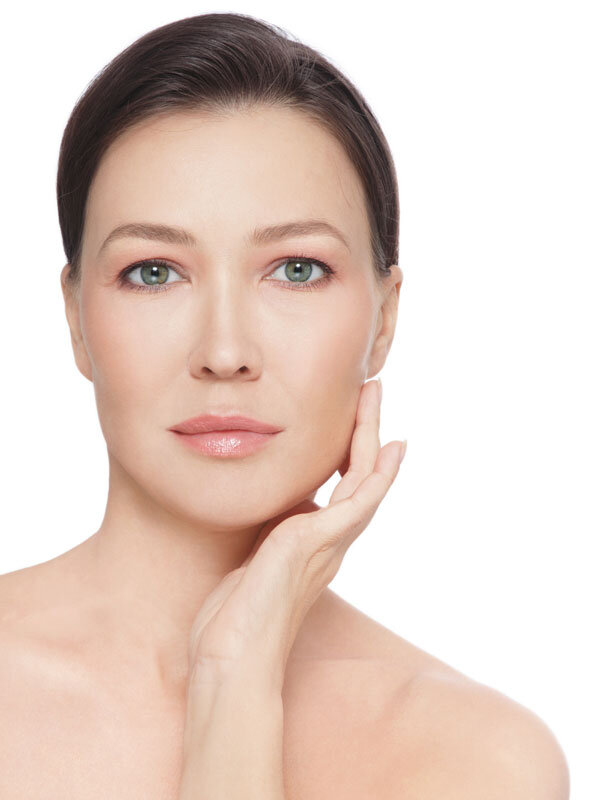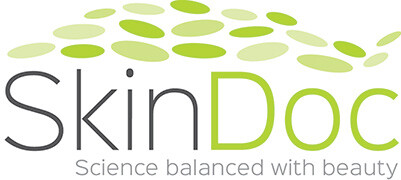The Concept of Beauty
A beautiful face is thought to be the most important factor for determining attractiveness. Attractiveness is overall perception of an individual. The Ogee Curve has been used to determine female attractiveness and beauty. The Ogee Curve is when there is a convexity followed by a concavity. This can be seen in the curves near high cheekbones, eyelid-cheek junction, lips and eyebrows.
There are universal standards of beauty that cross racial, ethnicity and cultural barriers. It is not the human eye but the human brain that decides what is a beautiful face. An attractive face is what we look with our eyes but visualise with our brains.
The role of volume and facial beauty
Facial volume is associated with youthful appearance. Most volume loss is due to changes in bone, muscle and ligaments in the face with age. The fat compartments which are divided into superficial and deep components are also involved with the deep component prone to the thinning with ageing.
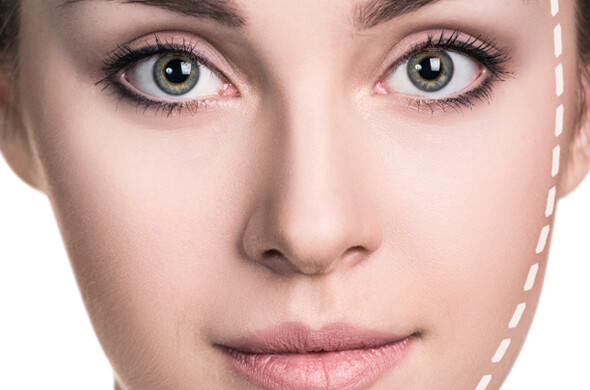
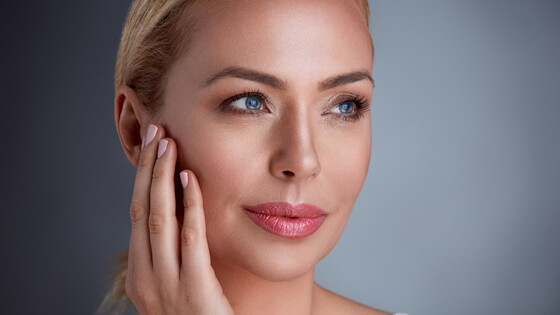
The Ageing Face
As infants the face tend to have large distributions of fat pockets in the lower and mid-face. With relatively small cheekbones, the appearance is that an upward pointing triangle with the apex in the area of the glabella (the area between the eyebrows) and the base at the chin and inferior cheek.
With age, the bones continue to develop and fat becomes more prominent in the chin and cheekbone areas as well as the medial cheek after adolescence. This leads to reversal of the triangle with the apex at the chin and the broad base at the level of the upper cheek.
As middle age approaches muscle and fats becomes thinned. As a result the contours start to flatten, bony landmarks become more prominent leading to extensive shadowing of deep folds and facial hollows. These age-related changes lead to the skin to be appose more closely to the bony skeleton and drop toward the lower face. A perfect time for facial rejuvenation.
There are two separate facial fat compartments, the superficial and deep. The deep compartment tends to undergo atrophy or thinning. The mid-facial fat compartments move medially and inferiorly.
Facial shapes
The most attractive facial shape for females regardless of ethnicities is the oval face with a much wider dimension in the mid and upper face than the lower face.
In males, a square or sharp angular shape is acceptable. The upper face should have adequate bi-zongial distance. The lower half of the face should show strong masseteric volume and jaw angle leading to a strong defined jawline and strong square chin.
Phi principles
True facial beauty is defined by the Golden Ratio (Phi). Leonardo da Vinci noted that everything beautiful in nature exhibited a Golden Ratio of 1: 1.618 (also known as Phi). Using these specific measurements we are able to calculate where and how to apply botulinum and fillers to achieve this Golden Ratio in all areas of the face to obtain a more beautiful face. The goal is to make our female patients the most beautiful version of who you are.
The Golden Ratio is a mathematical ratio of 1.618:1 called Phi. Phi ratio defines the brow, lip, eye areas and are used in creating phi proportions to optimise beauty. The precise measurements during beautifiPHIcation process gives the patient the confidence that their results will be
- Natural
- Optimally proportioned
What constitutes an attractive face?
Dr Arthur Swift, Canadian Plastic Surgeon has created the ‘magnificent 7’ attributes
- Facial shape – chin, cheeks and symmetry
- Forehead height
- Eyebrow shape
- Eye size and inter-eye distance
- Nose shape
- Lips – length and height
- Skin clarity, texture and colour
What is BeautiPHIcation?
This involves an extensive consultation and evaluation of one’s face using scientific principles such as PHI and the Golden Ratio. The inter-canthal distance (distance between the two medial canthi) or x is used to establish the unit length on which Phi (1.618x) and phi (0.618x) are created. These measurements are used to maximise each patient’s ‘phi’ beauty potential, offer facial rejuvenation.
There is now a shift in facial rejuvenation from the two dimensional approach focusing on correcting dynamic facial lines to a three dimensional approaching which includes addressing the loss of facial volume. Youth and beauty are associated with a full and wide mid-face and is often referred to as the ‘triangle of youth’.
First we establish what are the major concerns you have about your facial appearance. Evaluation of your perception of what you hope to achieve is analysed. Limitations of treatments and in particular the limits of a specific treatment for a specific patient will be discussed. Before any treatment digital photographs would be taken after consent has been obtained and used to compare with after treatment digital photographs.
The first consultation
When you first come for a cosmetic consultation, you will need to complete a consultation form in which you will be asked what you would like to be treated. The next step you will complete a past medical history questionnaire. Next digital photographs will be taken (front and oblique, profile).
The Global Facial Enhancement
The face is divided into three areas: upper, middle and lower 1/3s. The Phi principles are applied to each area to create a beautiful face. The aim is to refill, restore and resurface in a natural balance manner.
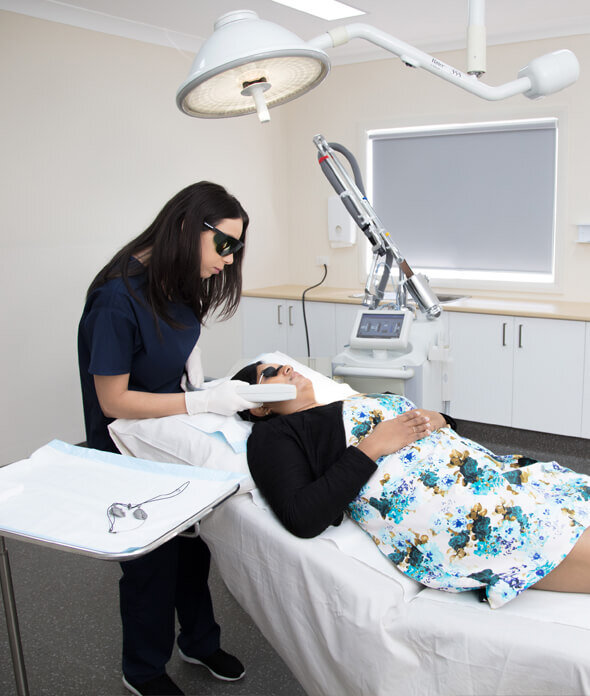
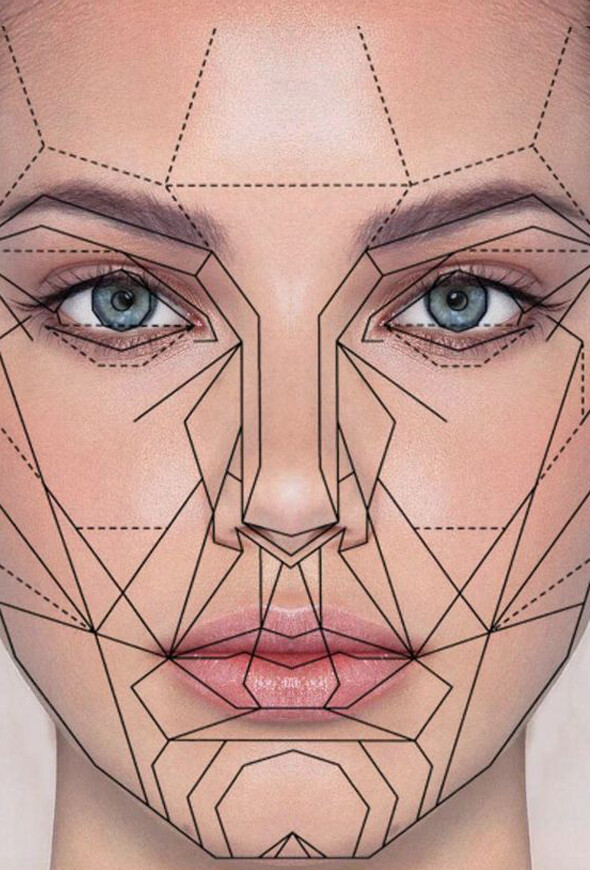
Facial Thirds System
The facial thirds system will be used to structure the consultation and to bring awareness about the potential benefits of the treatments proposed to those particular areas. The face is divided into three aesthetic areas: superior, medial and inferior. We will discuss with you the positive and the less positive aspects of your face. In general, dynamic wrinkles are treated with botulinum toxin, while wrinkles, folds and volume loss with fillers and saggy skin with fractionated lasers or surgery and mottling due to sun damaged with skin smoothing treatments. We will discuss the benefits and limitations of each procedure with you.
Assessment
The first aspect to analyse is facial shape. How far is your face from the oval shape? The evaluation will include the profile and whether it is straight, convex or concave. Another important aspect is symmetry. Symmetry is beauty.
The Ageing Process
The ageing process is due to intrinsic and extrinsic factors. Extrinsic factors are sun exposure, smoking and poor diet. Intrinsic factors are mainly influence by genetics. With age deflation, deterioration, descent and disproportion of facial features occur due to skin laxity and volume loss. Ageing is a natural process and nothing can stop the ageing process but we can something to smooth the signs of ageing. The sooner you start, the less invasive the procedure will be. For example the deeper the fold, the greater the number of injections must be given. Once you commence treatment you are starting a facial rejuvenation process that needs regular reviews to maintain that improvement.
Ageing of the face is associated with a gradual thinning of the skin, loss of elasticity over time accompanied by diminished dermal collagen, hyaluronic acid and elastin. Constant muscle contraction with facial expression also contributes to formation of wrinkles particularly in the upper one third of the face. These dynamic lines are treated with botulinum toxin injections. In the lower two thirds of the face volume loss and laxity are more evident and facial volumising treatments are most commonly used in this region. Lines and wrinkles are more common in this area and are called static lines. Facial volume loss or biometric reduction occurs as a result of resorption of bone, degradation of subcutaneous tissue and descent of the fat pads in the face. The shape of the face changes from high cheeks and a small chin to a bottom heavy face with flattened cheeks and prominent jowls.
Patient Selection
The initial facial rejuvenation evaluation involves a frank discussion of the patient’s concerns and desires are documented to help devise a realistic treatment plan to achieve these goals. During this discussion, lines of facial expression, static and dynamic wrinkling and volume loss will be noted and documented. The next step would involve establishing treatment goals which would need to be mutually agreed upon as appropriate followed by selection of the filling agent which is best for the cosmetic concerns of the patient. A discussion of the potential limitations and expectations will occur after selection of the filler agent.
Facial volumising treatments are designed to soften lines and wrinkles rather than erasing them. Fillers can fill defects such as scars, folds, depressions, highlight existing facial structures or correct contour abnormalities.
Common postoperative side effects such as bruising, swelling, pain, redness, nodularities and abnormal sensations will be discussed. Bruising, swelling and redness are very common following injection of HA filler. These reactions often resolve within 7 days.
Patients on anticoagulants need to discontinue these medications 7 to 10 days before the procedure. Patients need to discuss with their local doctor whether these medications can be ceased. Other blood thinner medications such as nonsteroid anti-inflammatory drugs should also be ceased. Non-prescription herbal supplements that are associated with anticoagulation such as vitamin E, ginseng, ginger, ginkgo, garlic, kava kava, celery root, fish oils and St John’s Wart should be discontinued 7 to 10 days prior to treatment.
Patients who are required to continue on anticoagulants may be treated with fillers but with greater caution. However there may be an increased risk of transient local complications.

Biofilm reaction
This is a rare infection due to a complex aggregation of micro-organisms that leads to the formation of an extracellular protective adhesive matrix that allow for the development of community of antibiotic-resistant micro-organisms. Biofilms present as late-onset deeply red nodules. These nodules are treated with oral antibiotics. In some cases, surgery is required.
Wrinkle reducing facial rejuvenation treatment
There are two types of wrinkles, dynamic and static. They may occur separately or in combination. Dynamic wrinkles appear as a result of repeated contraction of the underlying muscles of facial expression. Static wrinkles appear regardless of facial dynamics and are due to both intrinsic changes in the components of the dermal ground substance and external factors such as sun exposure, gravity and smoking. Dynamic wrinkles in the upper face are best treated with wrinkle reducing treatment.
How does it work?
This naturally purified protein is derived from Clostridium botulinum which is synthesised in the laboratory under sterile conditions. When injected into targeted tissue it inhibits the release of acetylcholine at the neuromuscular junction. This temporarily reduces muscle contractions and smooths skin wrinkles in the treatment area.
The effects may take up to two weeks for maximal effect. The results can last about a few months when new nerve endings regrow and muscle contractions start to reappear. Repeated injections every 3 to 6 months can avoid the wrinkles reappearing.
Where can wrinkle reducing facial rejuvenation treatments be used?
They can be used frown lines, horizontal forehead lines, crow’s lines, lower eyelid wrinkles, eyebrow lift, bunny lines, lip lines (smoker’s lines or lipstick lines), marionette lines, downturned corners of the mouth, nasolabial folds, gummy smile, chin line, chin puckering and neck bands.
Results can be expected to be seen within 3 days but may take up to two weeks. Patients are re-assessed 2 weeks after treatment to evaluate the reduction of wrinkles.
Hyperdynamic muscles in the upper third of the face yield the most predictable results and greatest efficacy.
The lower two thirds of the face is associated with facial expression, essential functions such as mastication and elocution. Greater care and precise placement of small doses of wrinkle reducing treatment is required in these areas.
In some areas better results are obtained using a combination of wrinkle reducing treatment and facial volumising treatment. This is particularly relevant in the lower face. Deep wrinkles may not resolve with wrinkle reducing treatment alone. A filler substance used in combination with wrinkle reducing treatment may lead to a better outcome. In the lower face, where there are static and dynamic wrinkles, facial volumising may be the treatment of choice.
